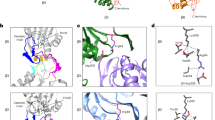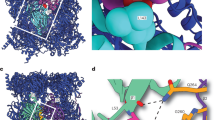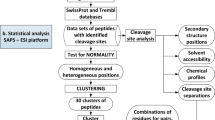Abstract
IT is now generally accepted that most, if not all, of the mucopolysaccharides (MPS) in connective tissues are bound to small amounts of protein or peptide. Recent estimates indicate that this protein content may be as little as 2 per cent for hyaluronic acid and as much as 15–20 per cent for cartilage protein–polysaccharide complexes1. Crude extracts of connective tissue always contain large amounts of protein not associated with the MPS. Therefore, in almost all procedures for isolating the MPS components, deproteinization is an essential first step before purification. It is usually assumed that the variety of proteolytic enzymes used, such as pronase, papain or trypsin, specifically degrade the “unrelated” protein but do not attack that complexed to the MPS. Although this is probably true there is, nevertheless, little direct experimental evidence to support this assumption. Other methods commonly used to deproteinize crude tissue extracts are adsorption on kaolin, Lloyd's reagent, shaking with chloroform-isoamyl alcohol (Sevag's procedure) and dialysis against a cationic resin2. Besides the possibility of degradation, these procedures generally result in great losses of material.
This is a preview of subscription content, access via your institution
Access options
Subscribe to this journal
Receive 51 print issues and online access
$199.00 per year
only $3.90 per issue
Buy this article
- Purchase on SpringerLink
- Instant access to full article PDF
Prices may be subject to local taxes which are calculated during checkout
Similar content being viewed by others
References
Schubert, M., Biophys. J., 4, 119 (1964).
Laurent, T. C., J. Biol. Chem., 216, 263 (1955).
Zade-Appen, A. M. M., Scand. J. Clin. Lab. Invest., 15, 331 (1963).
Berman, E. R., Biochim. Biophys. Acta, 101, 358 (1965).
Lowry, O. H., Rosebrough, N. J., Farr, A. L., and Randall, R. J., J. Biol. Chem., 193, 265 (1951).
Bitter, T., and Muir, H., Anal. Biochem., 4, 330 (1962).
Dische, Z., J. Biol. Chem., 167, 189 (1947).
Author information
Authors and Affiliations
Rights and permissions
About this article
Cite this article
BERMAN, E. Separation of Connective Tissue Mucopolysaccharide–Protein Complexes from Unrelated Proteins. Nature 211, 640–641 (1966). https://doi.org/10.1038/211640a0
Issue date:
DOI: https://doi.org/10.1038/211640a0



